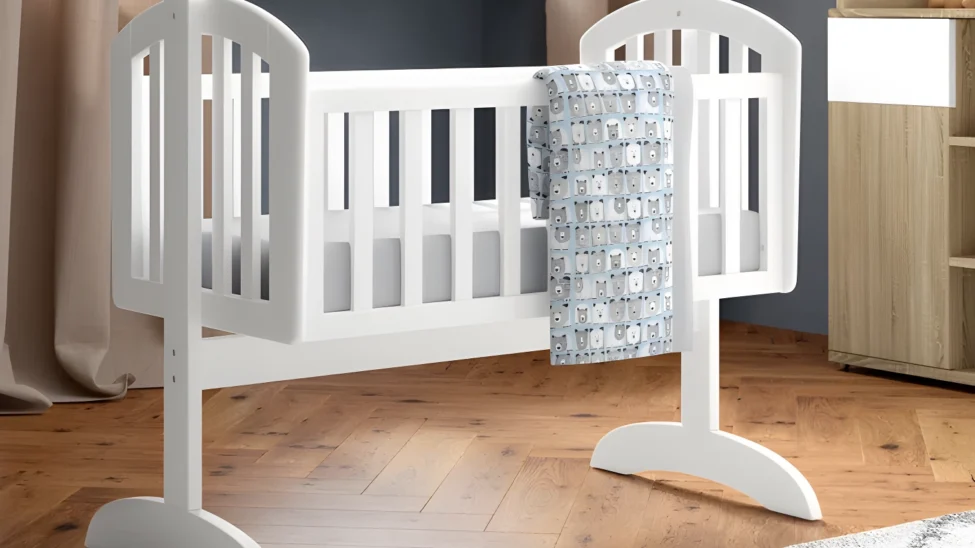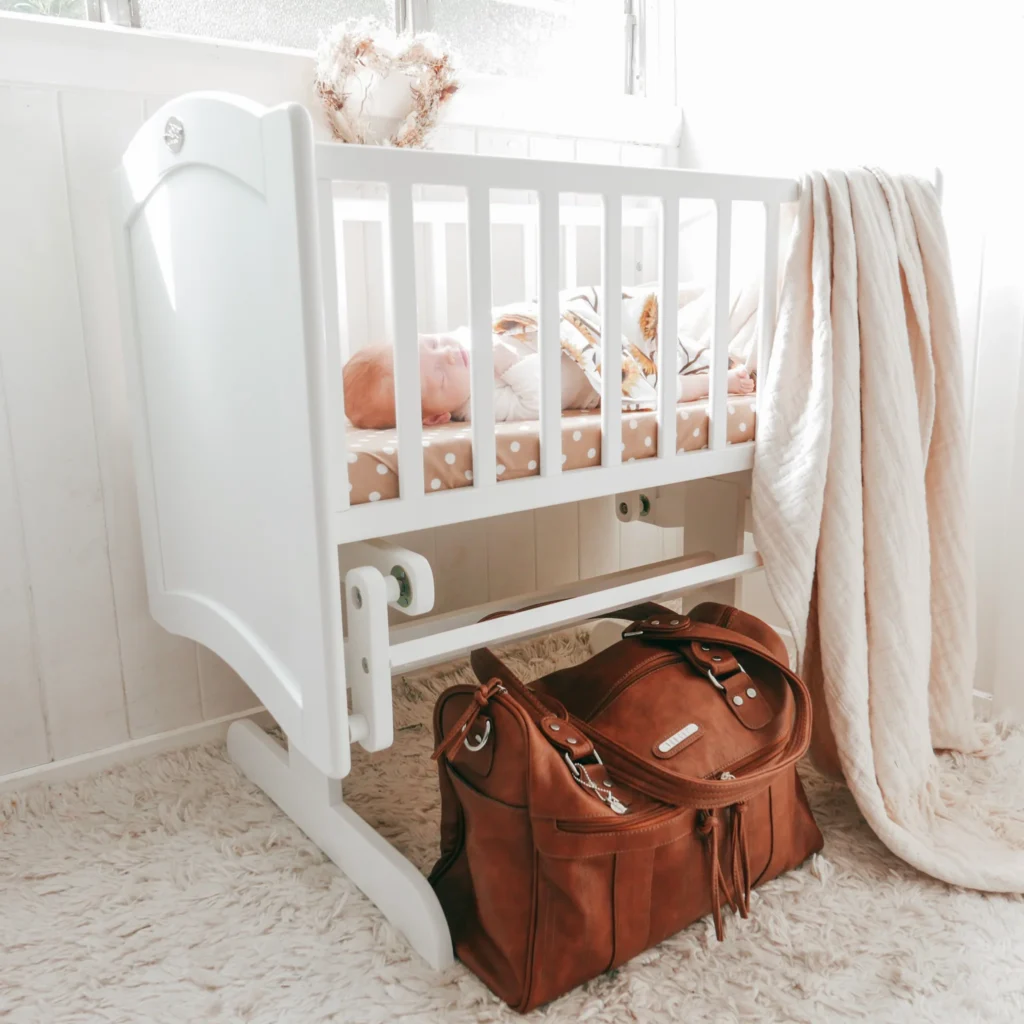
Why Rocking Seems Like a Dream Come True
I get it. You’re holding your baby, gently swaying side to side, and it feels like magic. They calm down, eyelids flutter, and for a moment—you breathe. That’s exactly why rocking cribs are so tempting. They promise a hands-free way to recreate that same soothing motion. But let’s pause right here.
There’s no denying the appeal. I remember my own daughter’s newborn weeks, pacing the room with her bundled in my arms, desperate for rest. A rocking crib felt like a miracle waiting to happen. But what’s marketed as a peaceful solution doesn’t always hold up under closer inspection.
Rocking cribs often feel like emotional relief for parents—but emotional relief and long-term sleep strategy are rarely the same thing.
So yes, rocking can help in those early chaotic weeks. But does that mean it’s always the right call? That’s where safety—and sleep development—enter the picture.
What You Should Know About Rocking Crib Safety
Not all rocking mechanisms are created equal. Some cribs have lockable gliders. Others use a pendulum base. And some can rock all over the place if you nudge them hard enough—which, trust me, becomes a problem when a toddler starts standing and bouncing.

There are two things I always ask parents to check:
- Can the rocking mechanism be completely locked?
- Is the crib certified for safety under local standards when used in rocking mode?
If the answer to either is no, the crib becomes a safety risk. Even a gentle swing can create enough motion over time to move the crib across the room—especially on hardwood or tile floors. That means potential tipping, collisions, or worse.
And then there’s wear and tear. I’ve seen families with second-hand rocking cribs that wobble more than they should because the parts loosen with use. What began as a gentle sway turns into unpredictable shaking.
A rocking crib should never move unless you want it to. If it glides even when it’s supposed to be locked, that’s a red flag.
When It’s Time to Stop Rocking Altogether
The honest truth? If your baby can sit up on their own or pull to a stand, it’s usually time to stop rocking. They’re mobile, curious, and strong enough to shift their weight—and that’s not ideal when their bed is moving.
Officially, many manufacturers recommend stopping use of rocking features at around 5–6 months. But from experience, I’d say trust what you see more than the label. If your baby is actively exploring their surroundings, don’t risk it.
And there’s something else. Rocking becomes a habit—for you and for them. If it’s the only way your child knows how to fall asleep, you might hit a wall around the 6–8 month mark when they start waking more often and expecting motion every single time.
Weaning off motion at the peak of sleep regression is a real challenge. It’s far easier to start phasing it out before it becomes a dependency.
The Link Between Rocking and Sleep Independence
Here’s where things get personal. I worked with a mom named Sarah who used a rocking crib for her twins. At first, it was the only thing that worked. But by the time the babies turned seven months, sleep was fragmented and unpredictable. They woke every hour unless rocked again.
Rocking can sometimes mask what’s really happening: the baby hasn’t learned to self-soothe. The motion replaces the chance for their brain to connect sleep cycles naturally. And while it might not matter at 2 weeks old, it catches up around month four and beyond.
If your goal is longer stretches of sleep (and whose isn’t?), it’s worth building independent sleep associations early. Motion has its place, but it can’t replace your baby’s own rhythm.
Motion should be an occasional tool—not a daily crutch—if you want to foster healthy sleep development.
Already Have a Rocking Crib? Here’s What You Can Do
Don’t worry—if you already bought a crib with rocking features, you’re not stuck. Plenty of families use these cribs safely. The key is how and when you use the motion.
Here’s what I tell parents in sleep consultations:
- Use rocking only during fussy periods or naps—not for every bedtime.
- Transition to a locked base as soon as your baby starts rolling or sitting.
- Watch the floor surface—place a non-slip mat or secure pads if needed.
And most importantly—observe. If the crib ever moves unexpectedly or your child seems too active, it’s time to lock it down completely.
In one case, a family I worked with in Warsaw used a pendulum crib but introduced a flat, firm wedge to stop rocking at night. They kept the function for daytime naps, and phased it out gradually. The transition worked because it was conscious, not reactionary.
Rocking is a feature—not a forever solution. Safe sleep always comes first, no matter how fancy the furniture looks.
Resources for Deeper Reading
For those who want to dig into certifications, recall lists, and motion research, I recommend starting with these resources:


